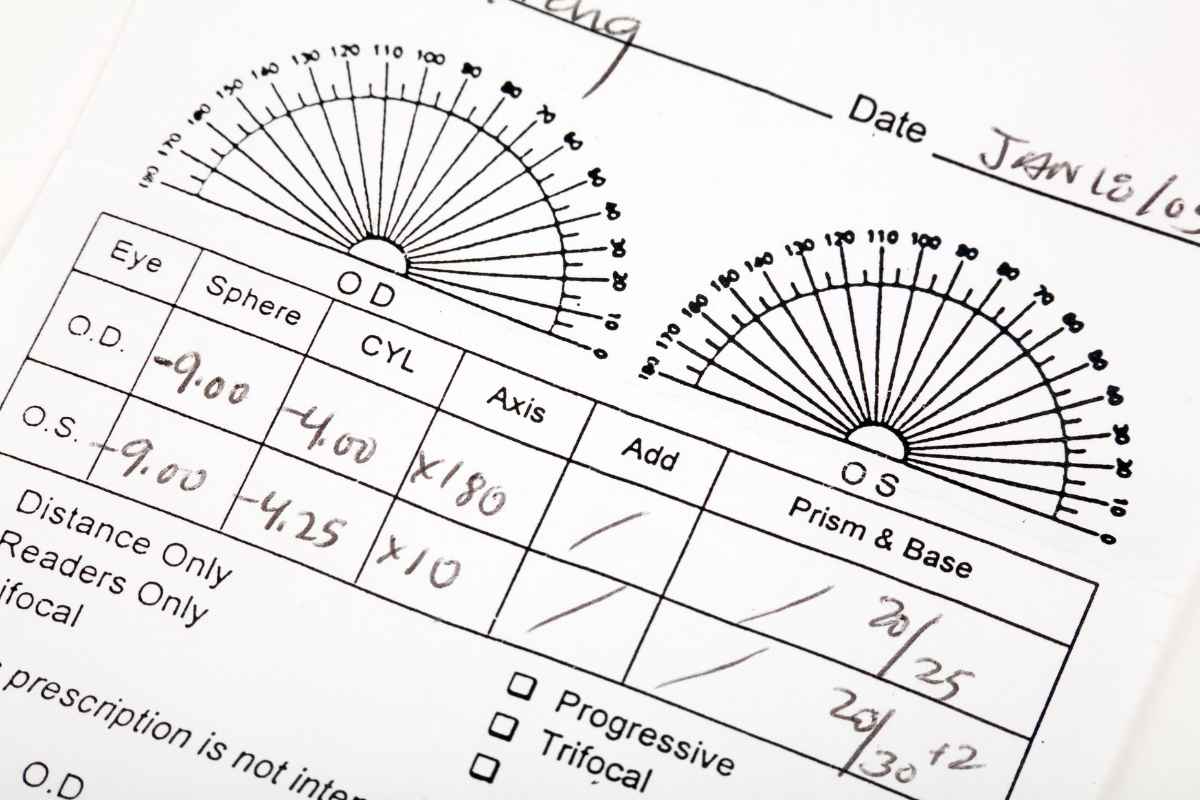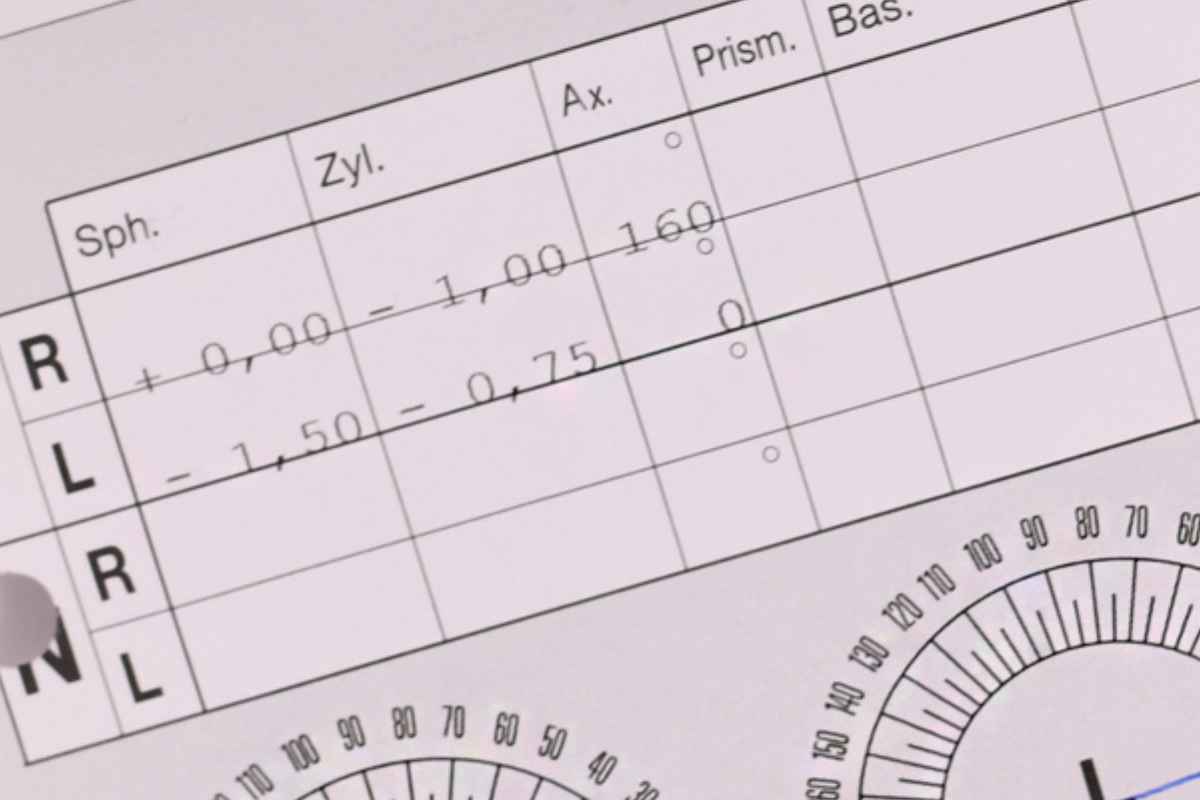What Is the Axis in Your Glasses Prescription?
It’s always helpful to understand your glasses prescription.
Whilst the numbers and abbreviations can get confusion – it’s an important bit of paper that helps you get high-quality lenses with the right fit and corrective features.
In this post, we look closely at one section of a prescription lens – the Axis – and what the values mean.
What does the Axis refer to?
The Axis of a cornea tells us the location of distortion that causes astigmatism.
When listed on a prescription, the Axis reads somewhere between 0 to 180.
This value helps your optometrist determine how to position a unique cylindrical lens in your glasses to correct this issue.
What does a “normal” eye Axis look like?
Since the eye Axis refers to the angle at which the eye’s cornea and lens are oriented relative to each other, there won’t be a specific Axis number for individuals without astigmatism.
This is because an irregular cornea or lens curvature defines astigmatism.
For those without astigmatism, the typical cylinder power is zero, and the Axis number is blank.
Your eyes are perfectly aligned if you have a “normal” eye Axis.
This means light travels straight through your pupils and lands exactly where it should on your retina, making for sharp, detailed vision and allowing you to see even the tiniest little details easily.
You don’t have to worry about blurred or distorted images or squinting to determine what you’re looking at.
Of course, this doesn’t mean you won’t ever need glasses or contacts for other vision issues, but having a normal eye Axis means you don’t have astigmatism.
Learning more about astigmatism
Have you ever noticed that your vision seems slightly off, even with your glasses or contact lenses?
It might be because you have astigmatism.
This condition means the shape of your cornea or lens curves irregularly.
The cornea is the clear part of the eye covering the iris (the colored part of the eye) and the pupil (surrounded by the iris), and it allows light to enter inside.
On the other hand, the lens is the clear, curved structure behind the pupil and focuses the light on the retina (transforms light into electrical signals to send to the brain to create the image we see).
Since the shape of the cornea or lens isn’t normal, light doesn’t bend correctly as it enters your eye, causing blurry or distorted vision.
Unfortunately, there’s no way to prevent astigmatism, and doctors still have no idea what causes it.
But don’t worry; there are plenty of options for correcting your vision.
Glasses or contact lenses are the most common astigmatism treatments.
By prescribing the right lenses, your eye doctor can help you see as clearly as possible.
But surgery is also an option if that doesn’t do the trick. This procedure changes the shape of your cornea, allowing it to focus light correctly.
Remember that if your astigmatism is only mild, you may not need any treatment.
The best way to determine what you need is to visit an eye doctor and get their expert opinion.
Other values you may see in glasses prescriptions
Aside from the Axis value, you can see, if not all, these other values on your eye prescription.
- OD and OSOD is for the right eye, while OS is for the left eye.
- Sphere (SPH)How much lens power is needed to fix nearsightedness or farsightedness.
- Cylinder (CYL)How much lens power is needed to correct astigmatism. If a CYL is included, the Axis will also need to be specified.
- AddIt means the additional lens power required to help the eye focus when reading.
- Prism/baseOpticians sometimes suggest a prism for people with double vision to correct the condition. You can place it horizontally, vertically, or diagonally in the lenses of your glasses. The “base” of the prism is the thickest edge, where light is redirected.
- Pupillary distance (PD)PD is measured in millimeters, it’s the distance between the centers of your pupils. It indicates where each eyeglasses lens’s optical center should be.
Regular eye checkups can help you maintain good vision
Caring for our eyes is crucial for maintaining good vision and overall eye health.
Regular eye checkups are vital to this process. Not only do eye exams help detect any problems early on, but they can also prevent potential future issues from arising.
For more eye care tips and guides, check out the rest of Mouqy’s blog!

Written by:
Phoebe Jade













